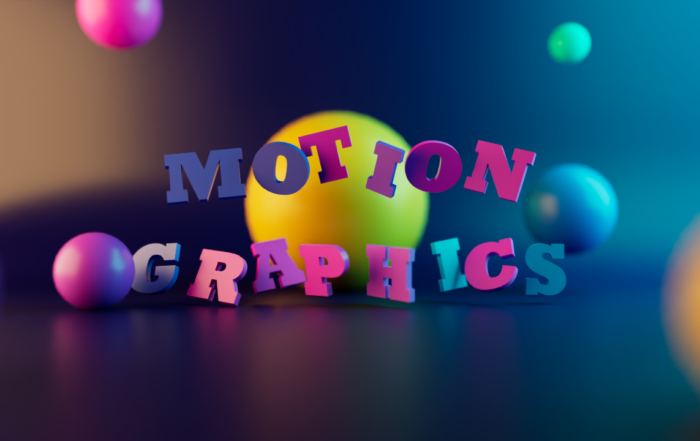This Ultimate Guide to AI Video Advertising will explore the various aspects of marketing with the use of Artificial Intelligence. Therefore, let’s take a deep dive into what AI Video Advertising really is, the trends, types of AI Video Ads, some case studies. And then, we will discuss how you can create AI Powered Video Ads.

Table of Contents
What is AI Video Advertising?
AI video advertising refers to the use of artificial intelligence (AI) technologies in the creation, targeting, optimization, and delivery of video advertisements. This approach therefore leverages AI algorithms and machine learning techniques to enhance various aspects of the advertising process. The goal therefore is to create more effective and engaging video content for specific target audiences.
Key components and aspects of AI video advertising include:
Content Generation: AI can generate video content based on specific inputs, such as text descriptions or keywords. This content can therefore include animations, visuals, and even voiceovers, automating the creative process to some extent.
Personalization and Targeting: AI analyzes user data and behavior to personalize video ads for individual viewers. Hence, this ensures that the content is relevant to the viewer’s interests, demographics, and online behavior, increasing the likelihood of engagement.
Dynamic Creative Optimization (DCO): AI can dynamically adjust various elements of a video ad, such as visuals, text, and calls to action, based on real-time data and user interactions. This allows for highly customized and optimized ad experiences.
A/B Testing and Optimization: AI can automatically conduct A/B testing on different versions of video ads to determine which elements are most effective at driving desired outcomes, such as clicks, conversions, or engagement.
Real-time Insights: AI can analyze real-time data to provide advertisers with insights into the performance of their video ads. In addition, this information can guide adjustments and refinements to the advertising strategy.
Voice and Speech Recognition: AI-powered voice and speech recognition technologies can enable interactive video ads that respond to user voice commands or engage in natural language conversations.
Chatbots and Interactivity: AI-driven chatbots can be integrated into AI video advertising, allowing viewers to interact with the content and obtain more information about products or services.
Automated Media Buying: AI can optimize media buying decisions by analyzing vast amounts of data and making real-time bids on advertising inventory to reach the most relevant audiences at the right time and place.
Fraud Detection and Prevention: AI can help detect and prevent ad fraud by analyzing traffic patterns and identifying suspicious or non-human behavior.
Translation and Localization: AI can automatically translate and localize video ads to reach audiences in different regions and languages.
AI video advertising holds the potential to increase efficiency, relevance, and engagement in the advertising process. However, it’s important to strike a balance between AI automation and the human touch. Therefore, it is important to ensure that the resulting content resonates emotionally, adheres to ethical considerations, and maintains a genuine connection with the audience.
Emerging Trends in AI-Powered Video Advertising: Shaping the Future of Digital Marketing
The landscape of digital marketing is rapidly evolving, and one of the most transformative forces at play is artificial intelligence (AI). In recent years, AI video advertising has emerged as a dynamic and innovative approach that is reshaping how brands connect with their audiences. In addition, from personalized content to advanced analytics, AI is driving a wave of exciting trends that are revolutionizing the world of video advertising.
Hyper-Personalization for Maximum Impact
One of the standout trends in AI video advertising is hyper-personalization. AI algorithms analyze vast amounts of user data, including browsing history, social media activity, and preferences, to create highly targeted video ads. These personalized ads resonate more deeply with viewers, leading to increased engagement and conversions. By tailoring content to individual interests and behaviors, brands can forge stronger connections with their audiences and deliver messages that truly resonate.
Interactive and Immersive Experiences
AI is unlocking new dimensions of interactivity and immersion in video advertising. Interactive elements, such as shoppable tags, polls, and quizzes, allow viewers to engage with the content and take meaningful actions within the ad itself. Moreover, AI-driven virtual and augmented reality experiences are enabling brands to transport viewers into immersive worlds. Hence creating memorable and captivating interactions that leave a lasting impression.
Dynamic Creative Optimization (DCO)
DCO, powered by AI, is changing the game for video ad creatives. In other words, this technology enables real-time adjustments to various elements of an ad. This includes visuals, text, and calls to action, based on user data and behavior. Therefore, by tailoring the ad content on the fly, brands can ensure that their messaging remains relevant and impactful, leading to higher engagement rates and better ROI.
Predictive Analytics and Decision-Making
AI’s prowess in data analysis is being harnessed to predict consumer behavior and optimize ad campaigns. Most importantly, through predictive analytics, AI can therefore anticipate trends, preferences, and even the best times to reach specific audiences. This therefore enables marketers to make informed decisions and allocate resources more effectively, resulting in more strategic and successful video advertising campaigns.
Voice Search and Voice-Enabled Ads
With the rise of voice-activated devices, AI-powered voice search is becoming a prominent trend in video advertising. Brands are leveraging voice recognition technology to create voice-enabled ads that respond to user commands and engage in natural language interactions. In addition, these ads thereby provide a seamless and personalized experience, enhancing user engagement and brand visibility.
AI-Generated Content and Deep Learning
AI’s ability to generate content is evolving rapidly. Deep learning algorithms are being used to create compelling visuals, animations, and even entire video scripts. Therefore, while AI-generated content is still in its early stages, it offers opportunities for marketers to streamline production processes and experiment with creative concepts that might not have been feasible otherwise.
In short, AI-powered video advertising is ushering in a new era of innovation and engagement in the digital marketing realm. The trends discussed above represent just a glimpse into the transformative potential of AI. As technology continues to advance, we can expect AI to play an increasingly central role in crafting highly personalized, interactive, and impactful video ad experiences. In addition, brands that embrace these trends stand to gain a competitive edge in a rapidly evolving landscape, where AI is shaping the future of video advertising.
Types of AI video Ads
AI-powered video ads come in various types, each leveraging artificial intelligence technology to achieve specific advertising goals and engage audiences in unique ways. Here are some types of AI video ads:
Personalized Video Ads: These ads use AI algorithms to analyze user data and preferences, creating customized video content for each viewer. In addition, personalized video ads increase relevance and engagement by tailoring the message to the individual’s interests.
Dynamic Creative Optimization (DCO) Ads: DCO ads use AI to dynamically adjust various elements of the ad, such as visuals, text, and calls to action, based on real-time user data and interactions. Therefore, this ensures that the ad remains relevant and impactful for different audiences.
Interactive Video Ads: AI-driven interactive ads encourage viewer engagement by incorporating elements like clickable hotspots, polls, quizzes, and interactive overlays. Viewers can actively participate in the ad, leading to increased interaction and longer viewing times.
Voice-Enabled Video Ads: With the rise of voice-activated devices, AI is used to create voice-enabled video ads that respond to voice commands or engage in natural language interactions. In other words, this type of ad enhances user engagement and provides a seamless experience.
Augmented Reality (AR) and Virtual Reality (VR) Ads: AI is employed to create immersive AR and VR experiences within video ads. For instance, viewers can explore virtual environments, try products virtually, or interact with 3D elements, enhancing engagement and brand interaction.
AI-Generated Content Ads: These ads use AI algorithms to generate visual content, animations, or even entire scripts. While still in its early stages, AI-generated content can help streamline production processes and experiment with creative concepts.
Predictive Analytics Ads: AI analyzes user behavior and historical data to predict future actions, enabling ads that anticipate viewer preferences and needs. For example, these ads can effectively recommend products or services based on user interests.
Emotionally Intelligent Ads: AI analyzes facial expressions, voice tone, and other cues to gauge viewer emotions while watching the ad. This data therefore helps tailor content to elicit specific emotional responses, creating a more impactful and memorable experience.
Localized and Translated Ads: AI is used to automatically translate and localize video ads for different languages and regions, ensuring effective communication with diverse audiences.
AI-Enhanced Video Editing and Post-Production: AI can assist in video editing tasks, such as enhancing visuals, improving audio quality, and adding special effects, to create high-quality ads.
Chatbot-Integrated Ads: AI-powered chatbots can be integrated into video ads, enabling viewers to interact with the ad and receive real-time responses to queries or requests for more information.
The choice of AI video ad type depends on your campaign objectives, target audience, and the message you want to convey. Therefore, leveraging the right type of AI video ad can enhance engagement, improve brand interaction, and ultimately drive desired outcomes.
AI Video Ad Case Studies
IBM Watson and Tribeca Film Festival: In 2016, IBM Watson collaborated with the Tribeca Film Festival to create the first-ever AI-generated movie trailer for the horror film “Morgan.” In addition, IBM’s Watson analyzed the entire movie to determine the most suspenseful moments. Then, this helped the film’s creators create a trailer that captured those moments effectively. The AI-powered trailer received attention for its unique approach to movie marketing.
Hyundai and Machine Learning: Hyundai used machine learning algorithms to analyze automotive features, trends, and customer preferences. This analysis was then used to create a unique AI-generated commercial for their luxury sedan, the Genesis. The AI system therefore examined the top luxury car advertisements to understand the style and tone, resulting in an advertisement that fit the genre while being distinctive.
Lexus and IBM Watson: In collaboration with IBM Watson, Lexus created a commercial for their new ES sedan. They used Watson’s AI to analyze 15 years of footage from commercials in the luxury car segment. The AI identified common features and visual cues that were popular among audiences. In conclusion, the resulting commercial incorporated these insights into its production.
Jaguar Land Rover and Lucid AI: Jaguar Land Rover partnered with Lucid AI to develop an AI-powered ad campaign. The AI system analyzed thousands of car and luxury ads to create a unique script and visual treatment for the advertisement of the Jaguar F-PACE vehicle. Hence, the AI’s output was then refined by human creatives to produce the final commercial.
Coca-Cola and AI Personalization: Coca-Cola used AI to create personalized video advertisements for its “Share a Coke” campaign. The AI analyzed data from social media profiles and interactions to generate unique videos that featured personalized messages and content relevant to each individual.
Sunsilk and Unilever: Unilever’s shampoo brand, Sunsilk, used an AI tool to analyze consumer insights and preferences. The AI-generated data thereafter helped the brand identify trends and create video advertisements that resonated with their target audience.
Renault and Google’s AI: Renault collaborated with Google’s AI technology to create an interactive video ad campaign for their Clio model. Therefore, the ad invited viewers to engage with the video by choosing between different storylines, creating a personalized and engaging experience.
How to create AI videos
Creating AI-powered video ads involves several steps that combine technology, creativity, and strategy. Here’s a general outline of the process:
Define Your Objective and Audience:
Clearly define the goal of your video ad (e.g., brand awareness, product promotion, lead generation) and identify your target audience. In addition, understanding your audience’s preferences and behaviors is crucial for creating personalized content.
Gather Data:
Collect relevant data about your audience, including demographic information, browsing history, and previous interactions with your brand. This data will serve as input for AI algorithms to personalize the ad.
Choose an AI Platform:
Select an AI platform or tool that offers video creation capabilities. Most importantly, there are various AI-powered tools available, ranging from content generation to personalized recommendation engines.
Content Creation:
Depending on the AI platform you choose, you can input text, images, and other assets to generate video content. AI algorithms therefore can convert text into visuals, create animations, and even generate voiceovers.
Personalization and Optimization:
Utilize AI to personalize the video content based on the data you’ve collected. This could involve dynamically changing visuals, text, or even the entire narrative to match the viewer’s preferences.
Interactive Elements:
Incorporate interactive elements if suitable for your ad objective. AI can help create interactive polls, quizzes, or shoppable tags within the video to engage viewers and encourage actions.
Dynamic Creative Optimization (DCO):
Implement DCO to allow AI to optimize your video ad in real time. The AI will hence adjust elements of the ad based on user interactions and performance data to maximize engagement.
Quality Control and Brand Alignment:
Review the AI-generated content to ensure it aligns with your brand’s identity, values, and messaging. Make any necessary adjustments to maintain consistency.
Testing and Iteration:
Conduct A/B testing with different versions of your AI video ad to determine which elements are most effective in achieving your objectives. Most importantly, analyze performance metrics and iterate accordingly.
Integration and Distribution:
Integrate the AI-generated video ad into your advertising campaign strategy. Therefore, choose the appropriate platforms and channels to reach your target audience, whether it’s social media, websites, or other digital channels.
Monitoring and Optimization:
Continuously monitor the performance of your AI video ad. Use AI-powered analytics tools to track engagement, conversion rates, and other key metrics. Hence, adjust your strategy based on insights gained.
Ethical Considerations:
Be mindful of ethical considerations, such as data privacy, content ownership, and potential biases in AI-generated content. In addition, ensure your AI video ads adhere to ethical standards and do not inadvertently offend or alienate your audience.
Remember, while AI can streamline the creation and optimization of video ads, human creativity, strategic thinking, and emotional understanding remain essential for crafting ads that truly resonate with your audience. The best results often come from a collaborative approach that leverages both AI technology and human expertise.
Conclusion
In a nutshell, AI video advertising harnesses the power of artificial intelligence to create, optimize, personalize, and distribute video content in a way that maximizes engagement, reach, and conversion rates. It’s a dynamic and rapidly evolving field that leverages technology to create more impactful and effective video advertising campaigns.
Recent Posts
An Ultimate Guide to Instagram Marketing
This Ultimate Guide to Instagram marketing will explore the use of the Instagram platform[...]
A Definitive Guide to Free Marketing
Zero-budget marketing, also known as zero-dollar marketing or zero-cost marketing, refers to the practice[...]
A Guide to Motion Graphic Video Advertising
Motion graphic video advertising is a powerful and engaging way to communicate messages, promote[...]



